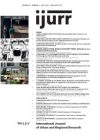Many studies have examined the role of racial prejudice and discrimination in the creation of racial residential segregation in US cities. Yet few researchers have situated early twentieth‐century meanings of race and racism within broader processes of urban development and the emergence of the modern real estate industry. Using a case study of Kansas City, Missouri, this article examines the organized efforts of community builders and homeowner associations to create racially homogeneous neighborhoods through the use and enforcement of racially restrictive covenants. Racially restrictive covenants encoded racial difference in urban space and helped nurture emerging racial prejudices and stereotypes that associated black residence with declining property values, deteriorating neighborhoods and other negative consequences. I argue that the cultivation and development of this segregationist ideology was simultaneously an exercise in the racialization of urban space that linked race and culturally specific behavior to place of residence in the city. As the twentieth century progressed, the identification of black behavior and culture with deteriorating neighborhoods became an important impetus and justification for exclusionary real estate practices designed to create and maintain the geographical separation of the races and control metropolitan development. I conclude with a discussion of how the linkage between race, racism and urban space helps to explain why racial residential segregation remains a persistent and tenacious feature of US metropolitan areas despite the passage of fair housing and numerous anti‐discrimination statutes over the past decades.
Details
Written by:
Kevin Fox Gotham
Digital Object Identifier (DOI)
10.1111/1468-2427.00268
About DOI
Read full article as PDF
Read full article as HTML
See the references for this article
